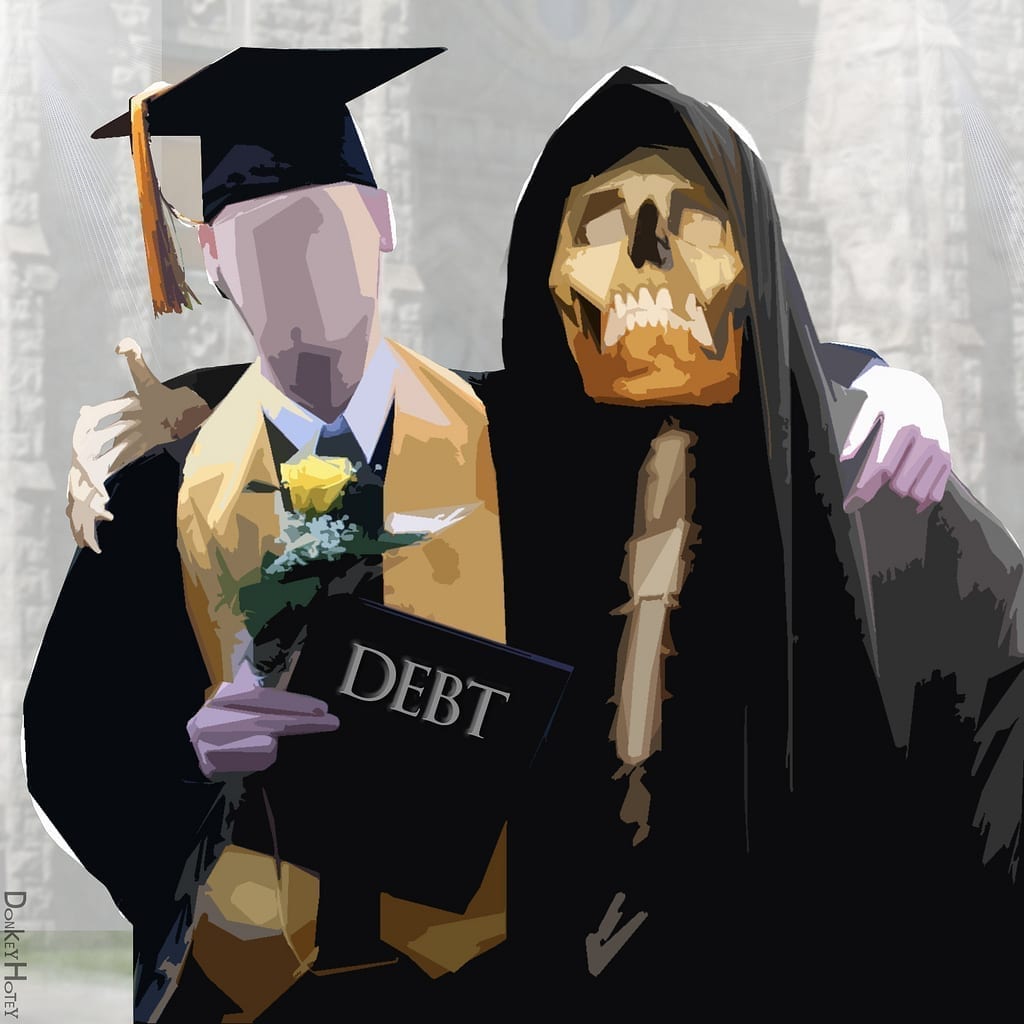Like any other tool, debt can helpful or harmful to people and the society they live in. It all depends upon how it’s used. Unfortunately, it’s becoming a weapon of mass impoverishment for our youth and working class.
Like any other tool, debt can helpful or harmful to people and the society they live in. It all depends upon how it’s used.
In a best case scenario, one person’s debt is another person’s investment. If borrowers put the money to work funding a productive enterprise, they eventually pay off the loan and keep what they’ve built, such as a business or college degree. Even in this win-win situation, however, lie unsustainable obligations.
Almost universally, taking out a loan means repaying more money than was originally borrowed. Lenders, such as people who invest their retirement nest egg in the bond market, hope the buyers of those bonds (such as businesses or countries) pay them enough interest to underwrite their golden years. Unfortunately, it means that eternal economic growth, an impossibility, is also an obligation. How else can borrowers pay it all back?
Some borrowers don’t pay it all back. That’s the main reason why interest is charged on loans, after all: to compensate lenders for the risk of default. Nowadays, though, that seems to be changing. Lenders are increasingly expecting to receive their interest payments without exposing themselves to any risk at all.
This is when lending becomes predatory, and an even bigger drain on society as a whole.
Take car loans, for example. The New York Times recently wrote about the subprime auto loan industry. Unscrupulous dealers took advantage of people who couldn’t qualify for standard loans by loading them up with debt, complete with sizable fees and usurious interest rates, in exchange for used cars that fell apart, sometimes only days or months later. Even after the repo man came for the car, though, folks who not only were poor in the first place but now couldn’t even get to work regularly were expected to keep paying their loans, no matter what.
Two-legged predators like these have no business charging sky-high interest rates, but even worse, these practices create a kind of indentured servitude in the Land of the Free.

Student loans are going down this same path. Betsy DeVos’s Department of Education is rolling back yet another scheduled protection, making it increasingly harder to have student debt forgiven even when schools deceive students outright. Thanks, Trump. Student loan debt is also much more difficult to discharge in bankruptcy court than most other loans.
Together, this adds up to a “damned if you do, damned if you don’t” situation for would-be students. The fear of being saddled with immense levels of debt so early in life, especially in a shaky economy, means that young people are more likely to forego post-secondary education entirely. What a waste of human potential in so many cases! As for students from middle and working class families who do go into debt for education, that crushing burden can delay other goals young people may hope to reach, such as buying a home, marriage, and starting a family. While that may help relieve a population in overshoot, there’s got to be a better way than by starting our youth out in debt servitude.
If it’s so bad to have our poor, working class, and students trapped and beggared in order to pay inescapable debts, why does it happen? Well, it keeps the people most likely to care about working class and student interests too busy and tired (and too broke) to take part in political solutions. It does so while enriching the very institutions that trap and beggar them. And it enables those who grow rich to take better advantage of desperate people neck-deep in debt. I suspect it’s no accident that things have turned out this way. All you have to do is follow the money.
Related: What is education for?


Join the conversation!